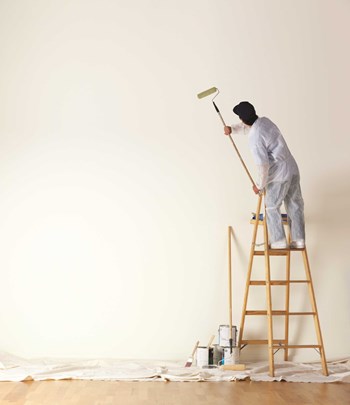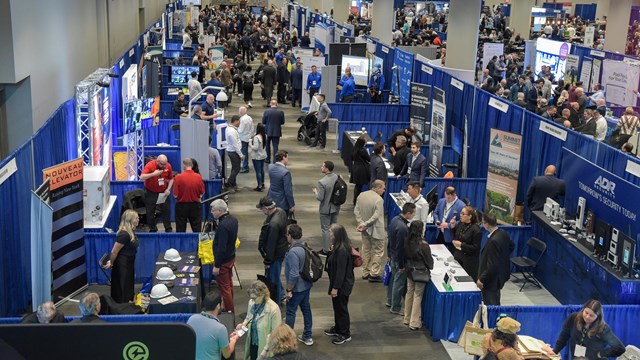
Media room, game room, common room, party room—regardless of what you call them, the purpose of these shared spaces in associations is to give residents a place to gather; to hold an in-house meeting, throw a graduation party or screen a movie, just to name a few possibilities.
Charging a modest fee to rent the room—either to residents or outsiders—can even be a welcome revenue stream for a building as well. However, if nobody is using a common room and it's just sitting there, lonely and neglected, the space can fall into disrepair. An underused, uncared-for common room becomes even less appealing to residents, and can ultimately create a vicious cycle and turn it from an amenity to a liability.
In tough economic times, when a building may be struggling to fund pressing repairs and residents may be in arrears, how do you breathe life into a languishing common area? If the roof is leaking, the media room's new flat screen will just have to wait—and getting new pool cues or steam-cleaning the sofas suddenly doesn't seem quite so important. But it doesn't have to be such an either-or choice. Some keys to making your community space desirable and successful (and keeping it that way) are in design, functionality, relevance and durability of the area—and they don't have to cost an arm and a leg.
Take a Good Hard Look
Accessing the condition and atmosphere in your common room is pretty straightforward; First and foremost, how do you feel about the space when you walk in? Is it dated and dark? Is it dusty and unappealing? Or...is it just “not right?” Which parts of the room can you change, but not move (without incurring great expense, that is) i.e. the walls and floor? Most everything else is negotiable on every level, from the cost of an upgrade to arranging the furniture and so forth within the space. Lighting can also play an important role in making your room versatile and appealing.
“I typically meet with the management company and we discuss what level of fit and finish they want,” says Catherine Daly, owner of Design East Inc. in Medford, New Jersey. “It depends on how sophisticated the finish. Are you doing flooring? Are you doing trim work? Are you going to look at your lighting as opposed to something more simplistic? Are you going to do a basic facelift of carpet and wallpaper?” Then I’ll do a site visit with someone from the community who has authorization to be part of the design process and take photos. We’ll have an initial dialogue in terms of what they really want to do, as opposed to our wish list for them. Once that’s done and we’re on the same page, we’ll have auto-CAD plans, take it back to the studio and do take- offs from that. That is really a major part of the project. You can actually see what it looks life in real life, but it’s computer generated.”
“I do research about the building, about who lives there, their age and gender and I research what their needs are,” adds Tina Tilzer, president of Arts & Interiors, an interior design firm based in Woodbury, New York. “After I do my research, I’ll meet with the beautification committee, which is usually appointed by the board. At that point I’ll ask lots of questions and try to get as much information as I can about the building and the look they are trying to achieve. I’ll find out how old the building is. I like to just walk around and see what I feel should stay and what I feel should be changed. I’ll also speak to the reception desk and concierge just to get more information from them and find out what their needs are as well.”
Opening the floor for resident feedback doesn't mean launching a free-form brainstorming session, however. Some concrete ideas or options should be nailed down prior to the feedback stage, and those choices presented to residents via surveys, emails and so forth.
What Makes a Room Work?
From a design standpoint, the pros say that successful common rooms tend to be consistent with the overall design aesthetic of the building. Variance on the theme of the aesthetic can assist in setting the backdrop for many different occasions, but residents shouldn't necessarily feel like they are walking into an entirely different structure.
“You can have a lobby in front of an elevator, or a walk up with a bunch of little mailboxes in a turn-of-the-century building, you have to respect what’s already there and work with that but you also have to determine what the space needs to do first,” says Greta Goss of Greta Goss Designs in Montclair, New Jersey. “I can make anything attractive, but before doing that I have to address the functions and make sure that those are satisfied. It’s function first. And it has to function for a variety of people, not just one person’s idea of what’s attractive.”
Appropriate flooring is also high on the list of ingredients in a successful design recipe. Upgrading scuffed laminate or grungy carpeting can gain you a lot of mileage in the overall look and feel of a common room. And high-traffic floor treatments have come a long way since the days of checkerboard institutional linoleum tiles.
Experts agree that the footprint and the layout of a room are important. “It’s important to see what the traffic patterns and flows of rooms are,” says Tilzer.
Once basics like paint and flooring are decided on and dealt with, the possibilities for what goes in the room and where are endless. Community rooms have several different roles to play to meet everyone's needs, so versatility and mobility in furnishings is of the utmost importance.
In addition to these two elements, lighting also has the ability to transform the room again and again. Most buildings—particularly older ones—are not equipped with recessed lights on dimmers, so more versatile 'work' and accent lighting is a great way to give the room some options.
“Lighting is very important. You don’t want people falling or tripping. You don’t want them slipping because they don’t see that the floor is wet,” says Goss. “We live in New Jersey—the weather changes, we have seasons. The light changes with the seasons. You don’t want it too harsh and glaring. I’ve been in places where you couldn’t find your keys because the lighting was so poor,” she says, giving an example of inadequate store-bought lights for rooms where the ceilings were 20 feet high. “The proportions were wrong and the lighting was wrong. It looked bad and it didn’t function. It ruined the entire room.”
A Place to Gather
While adaptability is the name of the game when revamping a common room, it doesn't hurt to promote the space for specific purposes. A surefire way to get residents excited about using the space is to make it a designated media area. Flat-screen TVs are no longer the prohibitively expensive pieces of luxury equipment they once were, and even mid-priced models offer a myriad of functionality, from screening films to showing slide shows or PowerPoint presentations. Also, simply having Wi-Fi access and an area for a laptop computer turns the space into a work station or study area.
Not every building is lucky enough to have one of these rooms—and those that do may not be getting maximum use from what they do have. Revitalizing your own common room may not be as daunting as you think. If your association falls into the latter category, it might be well worth it to bring up the idea of an upgrade or re-imagining of your common room or rooms at the next meeting's agenda.
“A common room is something you should be proud of. Not only for current residents but for potential new residents when they are coming to take a tour of your building,” says Daly. “It showcases who you are, who your community is. It should be maintenance-free and value-conscious,” she adds, but look impressive all the same.
Staff Writer Christy Smith-Sloman contributed to this article.




Leave a Comment